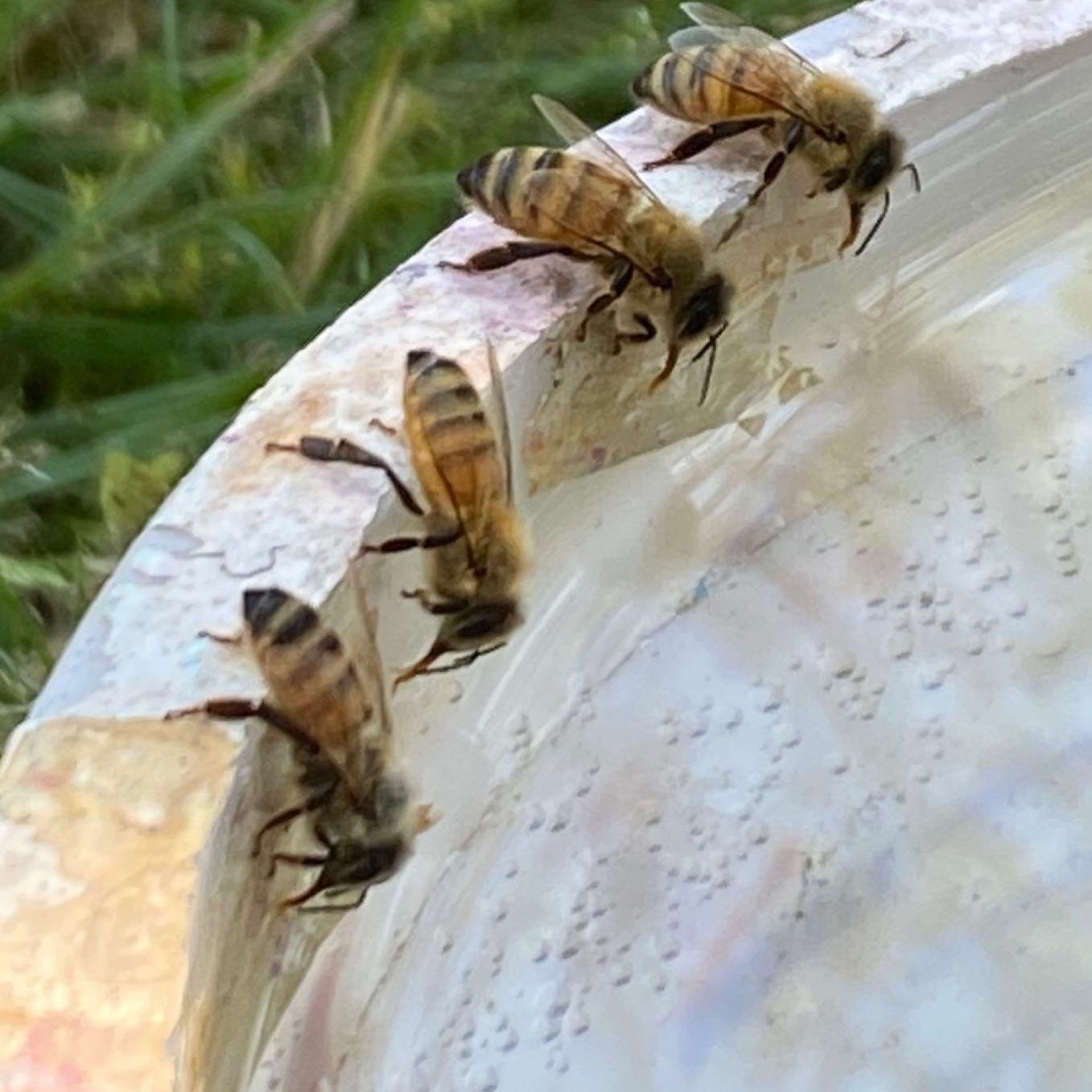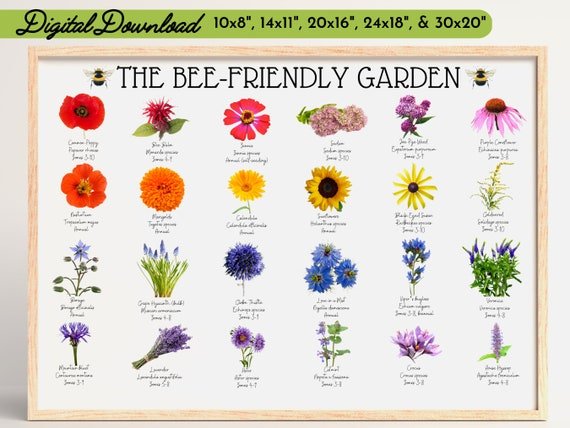As summer arrives, so does the scorching heat. Pollinators like bees, butterflies, and hummingbirds face challenges in these high temperatures.
These tiny creatures play a crucial role in our ecosystems, helping plants to reproduce by transferring pollen. Without them, our gardens, crops, and wild flora would struggle to survive. With the mercury rising, it becomes vital to support these essential beings through the hottest months.
Caring for pollinators in summer involves simple yet impactful steps. It’s about creating a safe haven in your garden where they can thrive despite the heat. Offering shelter, consistent water sources, and a diverse selection of plants can make a big difference. This introduction guides you through easy methods to protect our buzzing friends. You’ll learn to maintain a pollinator-friendly habitat right in your backyard. Let’s ensure these hard-working insects and birds stay healthy and active all summer long.
The Importance Of Pollinators
Pollinators are vital for healthy ecosystems. They help plants reproduce. This leads to fruit, nuts, and seeds. These feed countless creatures, including humans. Without pollinators, our food variety would plummet. Ecosystem balance would be lost.
Critical Role In Ecosystems
Pollinators like bees, butterflies, and birds do more than just make gardens pretty. They are key in plant reproduction. Over 75% of the world’s flowering plants need pollinators. This includes most crops. These little workers help plants grow, breed, and produce food.
- Bees pollinate many crops.
- Butterflies help plant diversity.
- Birds spread seeds far and wide.
Threats From Rising Temperatures
As temperatures rise, pollinators face new challenges. Heat stress can harm them. It can change their habitat and food sources. Droughts, also from heat, make flowers scarce. This means less food for pollinators. We must act to help these creatures.
| Threat | Impact on Pollinators |
|---|---|
| Heat Stress | Harms health and lifespan |
| Altered Habitats | Forces migration, changes in diet |
| Less Flowers | Reduces food availability |

Identifying Common Pollinators
Summer heat can stress our pollinator friends. Recognizing these vital creatures helps us create a friendly habitat. Let’s learn about common pollinators buzzing in the heat.
Bees And Their Varieties
Bees top the pollinator list. They come in various types. Honeybees and bumblebees are well-known. Honeybees live in hives, while bumblebees prefer the ground. Solitary bees like carpenter bees work alone. They’re all crucial for gardens.
- Honeybees – Apis mellifera
- Bumblebees – Bombus spp.
- Carpenter bees – Xylocopa
Each bee type has unique needs. Fresh water and shade help them beat the heat. Plant native flowers to feed them. Avoid pesticides, as they harm bees.
Butterflies, Moths, And Beyond
Butterflies bring color to gardens. Monarchs and swallowtails are common. Moths join the pollination crew at night. These insects need nectar plants. Milkweed is perfect for monarchs. A diverse plant selection supports many species.
| Species | Preferred Plants |
|---|---|
| Monarch | Milkweed |
| Swallowtail | Fennel, Parsley |
Butterflies and moths need sun for warmth. But they also need shade to escape the heat. A puddling area with moist soil helps them drink minerals. Keep the garden diverse for their health.
Identifying these pollinators is the first step. Next, we’ll create a haven for them in our backyards.
Understanding Pollinators’ Needs
Summer heat can be tough on pollinators. These tiny helpers need water and shade to stay healthy. Let’s explore how we can support them during hot months.
Water Sources For Hydration
Pollinators need water to survive. A simple water source can make a big difference. Here are easy steps to create one:
- Fill a shallow dish with water.
- Add stones or sticks for landing spots.
- Place it in your garden.
Change the water regularly to keep it clean.
Shelter From The Heat
Shade helps pollinators cool off. Plants and man-made shelters work well. Here’s what you can do:
- Plant trees and shrubs for natural shade.
- Build a pollinator house with simple materials.
Place these shelters near your garden. They give pollinators a break from the sun.
Creating A Pollinator-friendly Garden
Creating a Pollinator-Friendly Garden is key for helping bees, butterflies, and other pollinators thrive during hot summers. A well-planned garden offers shelter, food, and water for these essential creatures. Let’s explore how to make your green space a haven for pollinators.
Choosing The Right Plants
Select plants that bloom at different times to provide a steady food source. Native species are best, as they have evolved alongside local pollinators. Include a mix of colors and shapes to attract a variety of species. Clustering plants helps pollinators find them more easily. Remember to plant in sunny spots since many pollinators love the sun.
- Bee balm: vibrant and nectar-rich
- Coneflowers: long-blooming and hardy
- Zinnias: colorful and easy to grow
Pesticide-free Practices
Chemicals can harm pollinators. Use organic methods to manage pests. Encourage natural predators like ladybugs. Build healthy soil for strong plants. Mulch reduces weeds and conserves water. A pesticide-free garden ensures a safe haven for pollinators.
| Practice | Benefit |
|---|---|
| Companion planting | Reduces pests naturally |
| Manual removal of pests | Protects pollinators |
| Soil health | Supports plant resilience |
Watering Practices For Pollinator Health
Pollinators thrive with proper care, especially during summer heat. Key to their health is effective watering. Let’s explore how best to water these vital creatures.
Frequency And Timing
Regular watering beats the heat. Early morning or late evening works best. This schedule protects pollinators from the midday sun.
- Early morning watering helps plants survive the hot day ahead.
- Late evening watering ensures a cooler environment for pollinators to drink.
Safe Watering Techniques
Use safe watering methods for pollinator friends. Avoid deep pools. Instead, create shallow water sources.
| Technique | Description |
|---|---|
| Shallow Dishes | Fill dishes with pebbles and water. Allows easy access for pollinators. |
| Drip Irrigation | Keeps soil moist without overwhelming small insects. |
| Plant Saucers | Place under pots. Collects excess water for bees and butterflies. |

Shade And Shelter Solutions
As summer heats up, our garden friends need extra care. Shade and shelter are key. They keep pollinators cool and safe. Let’s explore how to provide these necessities.
Natural And Artificial Shade
Shade helps pollinators stay cool. Trees and tall plants offer natural shade. They make the garden cooler. For areas without much green, artificial shade works. Use umbrellas or cloth over garden spots. This creates cool rest spots for bees and butterflies.
- Trees: Best natural coolers.
- Shrubs: Good for low ground shade.
- Umbrellas: Quick artificial shade.
- Cloth: Easy to set up over plants.
Safe Havens For Overheated Insects
Insects get too hot, too. They need safe places to cool down. Bug hotels and shaded water spots are great. Bug hotels offer shelter. Shaded water spots give them a drink in the heat.
- Build a bug hotel with sticks and straw.
- Place water dishes in the shade.
- Change water regularly to keep it fresh.
By setting up shade and shelters, we help our pollinator friends. They stay cool and keep our gardens alive. Let’s make summer better for them!
Monitoring And Supporting Pollinator Health
Monitoring and Supporting Pollinator Health is crucial during hot summers. High temperatures can stress bees, butterflies, and other pollinators. Their survival impacts our ecosystems and food supply. Proper care ensures these tiny workers thrive despite the heat.
Observing For Signs Of Stress
Keep an eye on pollinator activity. Look for less buzzing or fewer butterflies. These could be stress signs. Ensure water sources are available. Pollinators need to stay hydrated.
- Bees may be seen panting or bearding outside the hive.
- Butterflies might show reduced flying or feeding.
- Hummingbirds require frequent access to nectar-rich flowers.
Interventions For At-risk Pollinators
Create a safe haven for stressed pollinators. Here’s what you can do:
| Intervention | Benefits |
|---|---|
| Shade areas | Provides relief from direct sunlight |
| Mist flowers | Offers moisture for pollinators |
| Plant diverse species | Ensures continuous bloom and food |
Remember, avoid pesticides. They harm pollinators. Choose organic solutions to protect these vital creatures.

Community Efforts And Advocacy
Summer heat can be tough on pollinators. Bees, butterflies, and other insects face challenges. Water scarcity and habitat loss are big ones. But communities can make a difference. United efforts and speaking up for pollinators help. Let’s explore how.
Educating Others
Knowledge is power. Sharing facts about pollinators is key. People protect what they understand. Use local events to spread the word. Schools, libraries, and clubs are great places to start.
- Hand out informational flyers.
- Host workshops on building bee hotels.
- Set up info booths at farmer’s markets.
Collaborative Conservation Projects
Joining hands makes a bigger impact. Start a community garden. It’s good for pollinators and people. Plant native flowers. They offer better support for local insects.
| Action | Benefit |
|---|---|
| Plant milkweed | Feeds monarch caterpillars |
| Set up water stations | Hydrates bees and butterflies |
| Use organic pesticides | Keeps soil and insects safe |
Frequently Asked Questions
What Plants Attract Pollinators In Summer?
Many summer-flowering plants are excellent at attracting pollinators. Lavender, bee balm, coneflowers, and sunflowers are particularly effective. These plants provide nectar and pollen, essential for bees, butterflies, and other pollinating insects. Planting a variety ensures a continuous food source throughout the season.
How Often Should I Water My Pollinator Garden?
In the summer heat, your pollinator garden may need watering every 2-3 days. It’s crucial to keep the soil consistently moist but not waterlogged. Early morning watering is best, as it reduces evaporation and gives plants time to absorb moisture before the heat of the day.
Can Pollinators Survive Extreme Summer Heat?
Yes, pollinators can survive extreme heat, but they need extra support. Providing shade, water sources like shallow dishes or birdbaths, and planting heat-tolerant plants can help. These measures ensure pollinators stay hydrated and have access to forage even in high temperatures.
Is Mulching Beneficial For A Summer Pollinator Garden?
Absolutely, mulching is highly beneficial for a summer pollinator garden. It helps retain soil moisture, keeps root temperatures stable, and suppresses weed growth. Organic mulches, like straw or wood chips, also add nutrients to the soil as they decompose, further supporting plant and pollinator health.
Conclusion
Caring for our pollinator friends is vital, especially during hot summers. Simple steps make a big difference. Offer shade, water, and avoid pesticides. Choose plants that thrive in heat and bloom all summer. Your garden will become a safe haven for bees, butterflies, and other helpful insects.
Remember, healthy pollinators mean a thriving ecosystem for us all. Let’s do our part to protect these small but mighty creatures. Their survival and our planet’s health depend on it. Let’s keep our gardens buzzing with life.


